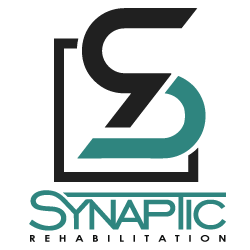
Parkinson's Physical Therapy
Parkinson’s disease, a prevalent neurodegenerative condition impacting motor functions and speech abilities, presents unique challenges for individuals, particularly the elderly population. Recognizing the importance of early intervention and specialized care, physical therapy has emerged as an essential component in managing the symptoms and improving overall well-being. This page explores the various therapeutic techniques, including LSVT BIG and LSVT LOUD, that are employed to retrain the muscular system, enhance balance, and improve motor skills. By empowering individuals and their caregivers with knowledge, this article aims to guide them towards a path of improved function and well-being.
Benefits of Parkinson’s Physical Therapy
The benefits of Parkinson’s physical therapy include improving motor function, enhancing speech skills, and preventing complications associated with the disease. Parkinson’s disease can greatly impact a person’s quality of life, but with the help of physical therapy, individuals can experience significant improvements in their daily functioning. Physical therapy not only focuses on the physical aspects of the disease but also considers the emotional and psychological well-being of the patient. Caregivers play a crucial role in the success of physical therapy by providing support and assistance throughout the treatment process. Long-term benefits of Parkinson’s physical therapy include increased mobility, improved balance, and a reduction in falls. By addressing the specific needs of each individual, physical therapy can have a positive and lasting impact on the overall quality of life for those living with Parkinson’s disease.
Key Components of Parkinson’s Physical Therapy
To effectively address the specific needs of individuals with Parkinson’s disease, physical therapy incorporates key components that target motor function, speech skills, and overall well-being. Early intervention is of utmost importance in managing Parkinson’s disease. Starting physical therapy early can help slow down the progression of the disease and prevent complications and function loss. Occupational therapy plays a crucial role in addressing the daily activities and tasks that may be affected by Parkinson’s disease. It focuses on maintaining independence and improving quality of life. Additionally, music-assisted therapy has shown promising benefits for individuals with Parkinson’s disease, including improved motor coordination, speech, and emotional well-being. By incorporating these key components into Parkinson’s physical therapy, individuals can receive comprehensive care that addresses their specific needs and helps them maintain optimal function and well-being.

Exercises for Parkinson’s Physical Therapy
Exercises that target specific motor functions and speech skills are integral components of Parkinson’s physical therapy. Strengthening exercises are designed to improve muscle strength and flexibility, helping patients maintain mobility and perform daily activities more effectively. These exercises often focus on the upper and lower extremities, targeting areas that are commonly affected by Parkinson’s disease, such as the hands and legs. Balance training is another crucial aspect of therapy, as individuals with Parkinson’s often struggle with balance and coordination. By incorporating exercises that challenge balance and stability, patients can enhance their ability to maintain an upright posture and reduce the risk of falls. Additionally, functional movements, such as reaching, grasping, and walking, are incorporated into therapy sessions to improve overall motor control and enhance functional independence. Through these exercises, individuals with Parkinson’s can regain confidence in their abilities and improve their quality of life.
Stretching Techniques for Parkinson’s Physical Therapy
Stretching techniques play a vital role in Parkinson’s physical therapy by promoting flexibility and improving the range of motion in affected muscles and joints. Differentiating Parkinson’s symptoms, such as muscle stiffness and rigidity, can greatly benefit from regular stretching exercises. These techniques aim to counteract the muscle tightness commonly experienced by individuals with Parkinson’s disease, allowing for increased mobility and reduced discomfort.
Incorporating stretching exercises into Parkinson’s physical therapy can help maintain or improve muscle flexibility, which is crucial for performing daily activities. Stretching can target specific muscle groups, such as the arms, legs, and neck, to address the unique motor challenges faced by individuals with Parkinson’s disease. It is important to note that stretching should be done under the guidance of a physical therapist who specializes in Parkinson’s to ensure safety and effectiveness.
Consistency in therapy is key to achieving optimal results. Regular stretching sessions, conducted as part of a comprehensive physical therapy program, can slow down the progression of muscle stiffness and improve overall function. By incorporating stretching techniques into the treatment plan, individuals with Parkinson’s disease can enhance their quality of life and maintain their independence for as long as possible.
Tips for Finding a Parkinson’s Physical Therapist
What are the key considerations when seeking a Parkinson’s physical therapist? Finding therapists who specialize in Parkinson’s disease is crucial for the effective management of symptoms and improvement in quality of life. When searching for a physical therapist, it is important to consider their experience and expertise in treating individuals with Parkinson’s. Look for therapists who have a deep understanding of the unique challenges posed by the disease and who are familiar with the latest treatment approaches, such as LSVT BIG and LSVT LOUD. Supportive networks, such as Parkinson’s support groups or online communities, can also provide valuable recommendations and insights. Additionally, consider the location and accessibility of the therapist’s clinic to ensure convenience and regular attendance. By taking these factors into account, you can find a physical therapist who can provide the specialized care and support needed for individuals with Parkinson’s disease.
Integrating Parkinson’s Physical Therapy Into Daily Life
To seamlessly incorporate Parkinson’s physical therapy into daily life, individuals should prioritize consistent practice and incorporate exercises into their daily routine. Integrating therapy techniques into one’s lifestyle is crucial for maximizing the benefits of physical therapy. This can be achieved by dedicating a specific time each day for exercises, setting reminders, and creating a supportive environment at home. It is also important to make lifestyle modifications that support the therapy goals, such as maintaining a healthy diet, getting enough sleep, and managing stress levels. Additionally, having a strong support system in place can greatly enhance the integration process. Family members, friends, and healthcare professionals can provide encouragement, motivation, and assistance when needed. By making these adjustments and building a routine that includes physical therapy exercises, individuals with Parkinson’s disease can successfully incorporate therapy into their daily lives and improve their overall well-being.
Want more information about Parkinson’s physical therapy?
Synaptic Rehabilitation offers in home physical therapy, occupational therapy, and speech therapy for seniors and older adults. Our local therapists are highly-skilled and licensed to help you where you need it most.
Work with trusted Parkinson’s physical therapists near you
If you have questions regarding in home physical therapy, occupational therapy, and speech therapy for seniors and older adults, Synaptic Rehab can help by calling or by completing the contact form on our website.

Areas We Service
